Nostalgic food brands that you'll only find in Canada
Tastes of childhood

For many who grew up in Canada, chewing on gum that tasted like soap was nothing unusual, and ketchup chips and Hickory sticks were the childhood snacks of choice – that is, unless you favoured something a little sweeter, like a Caramilk or Coffee Crisp. But while these brands might spark serious nostalgia in some, most people outside of Canada haven't heard of them at all. These are the nostalgic food brands you'll only find in The Great White North.
Click or scroll through our gallery to discover our ranking of the nostalgic food brands you'll only find in Canada – counting down to the most beloved of all.
Our ranking is based on the popularity of each brand, taking into account sales and longevity.
17. Thrills
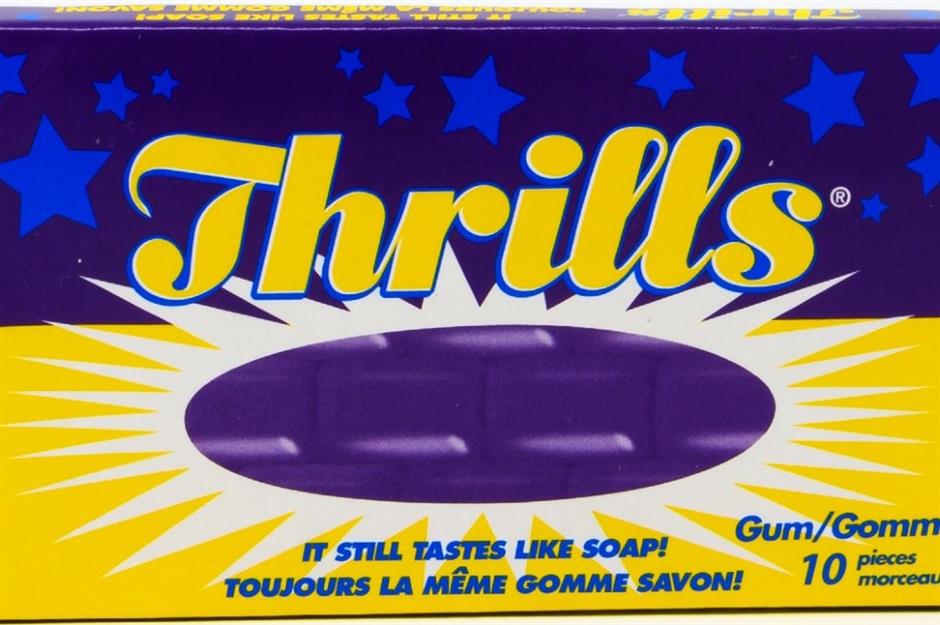
If you really want to taste Canadian nostalgia (with more than a hint of soap), reach for a pack of Thrills. The lurid purple chewing gum first hit shelves in the 1940s, thanks to London, Ontario–based confectionery company O-Pee-Chee. Originally white and sold in a blue and yellow cardboard envelope, the gum was flavoured with rosewater – but the floral taste was often compared to soap. This didn’t seem to put people off, and the candy remained popular when O-Pee-Chee was bought by Nestlé in the late 1980s.
17. Thrills
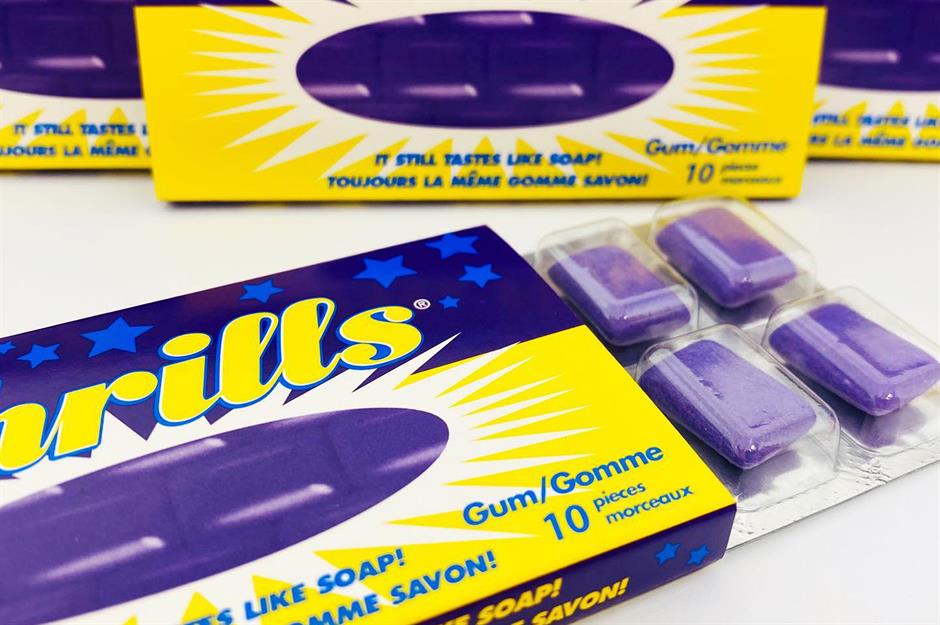
The gum now comes in a blister pack of 10 purple pieces and proudly declares on the packet: ‘It still tastes like soap!’ Who knows if anyone really enjoys chewing Thrills, but that soapy flavour can certainly evoke childhood memories. The ingenious rebranding is likely one of the reasons it's still going strong, sparking a slew of videos on social media showing people trying Thrills for the first time and reacting to that distinct taste.
16. Big Turk
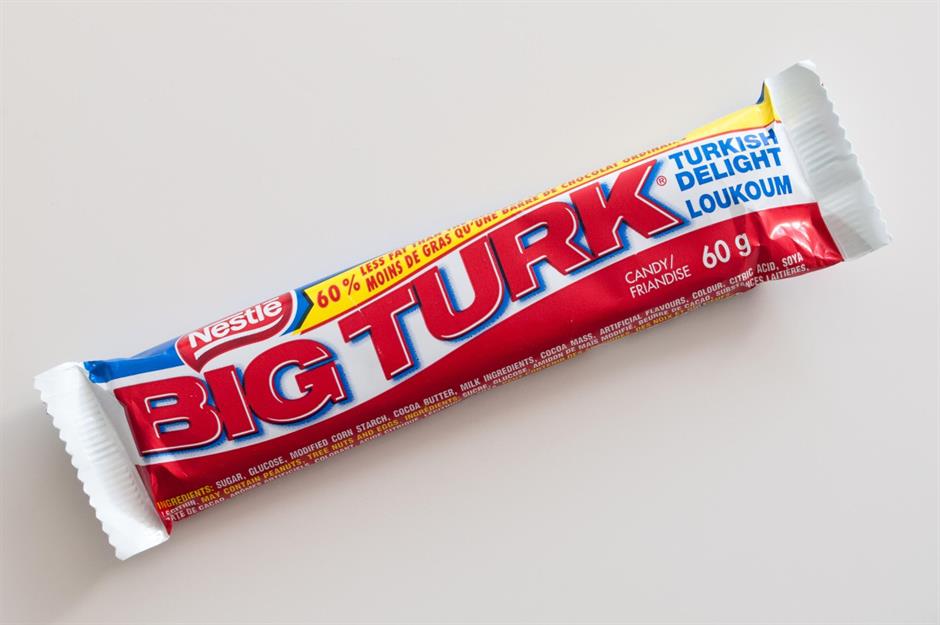
Love it or loathe it, this divisive bar has been a part of Canadian candy culture since the 1970s, and it shows no signs of going anywhere soon. Straying from regular chocolate bar norms, the Big Turk is made up of sweet, pink-hued Turkish delight, and it comes finished with a delicate milk chocolate coating.
16. Big Turk

Manufactured in Canada by Nestlé, the bar is easily recognisable thanks to its distinctive red, white and blue striped wrapper. The chewy, aromatic centre and the chocolatey casing make for a slightly unusual flavour combination, but many can’t get enough of the bar, and it continues to be a popular choice across the country to this day.
15. Windsor Salt
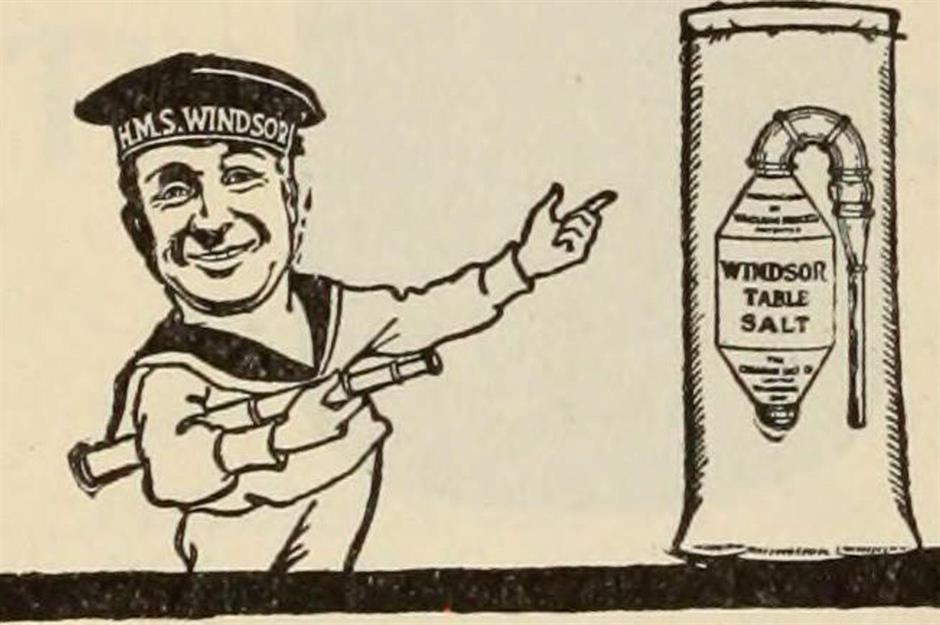
No Canadian pantry is complete without a box of Windsor salt. This is a brand steeped in history, founded in 1893 when three Canadian Pacific Railway Company employees decided to go into business mining salt in Windsor, Ontario. In addition to selling pouring salt for the table, the company supplies salt for pools and roads throughout Canada. Its headquarters remain in Pointe-Claire, Quebec, and mining still takes place in Nova Scotia and Windsor. Vintage advertising from 1908 declared: 'Every successful grocer in Canada sold Windsor Salt'.
15. Windsor Salt
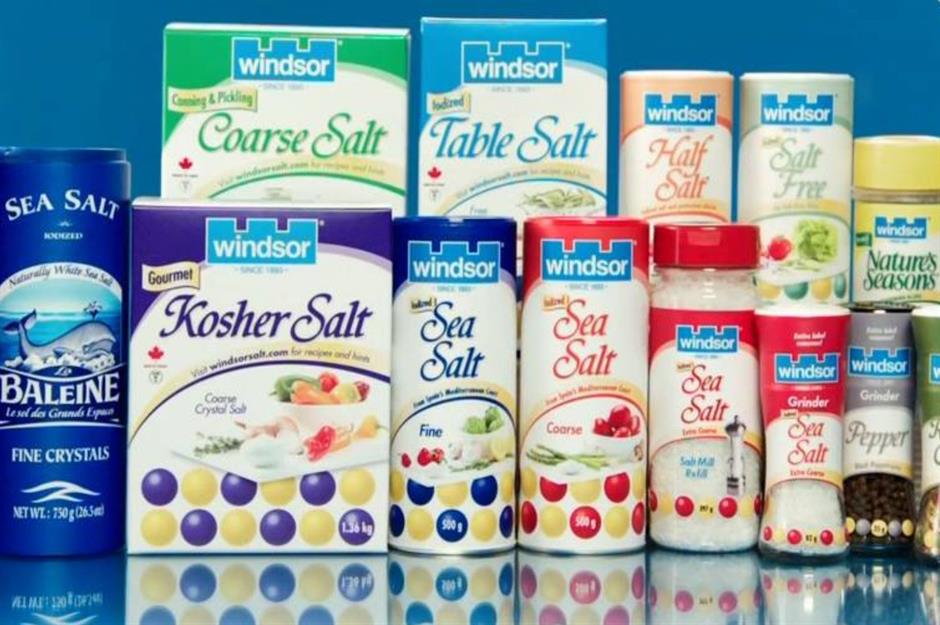
The product owes at least some of its success to its iconic box design, created by graphic designer Chris Yaneff in 1962. The minimalist style, originally with orange and blue dots on white packaging, made it a decorative essential in any modern kitchen, and its revolutionary design meant it was ‘storable, pourable and adorable’. After 40 years, Windsor decided to give the box a makeover – but the blue dots remain to this day.
14. Nabob coffee

Tim Hortons might be the Canadian coffee brand known around the globe, but inside most of the nation's kitchen cupboards you're more likely to find a tin of Nabob. A renowned name, Nabob Foods was founded by Robert Kelly and Frank Douglas in Vancouver, British Columbia in 1896. The original brass Nabob Coffee spoon, now a collectors’ item, had a handle depicting a man wearing a turban; back then, 'nabob' was a term used to describe a wealthy person from colonial India.
14. Nabob coffee
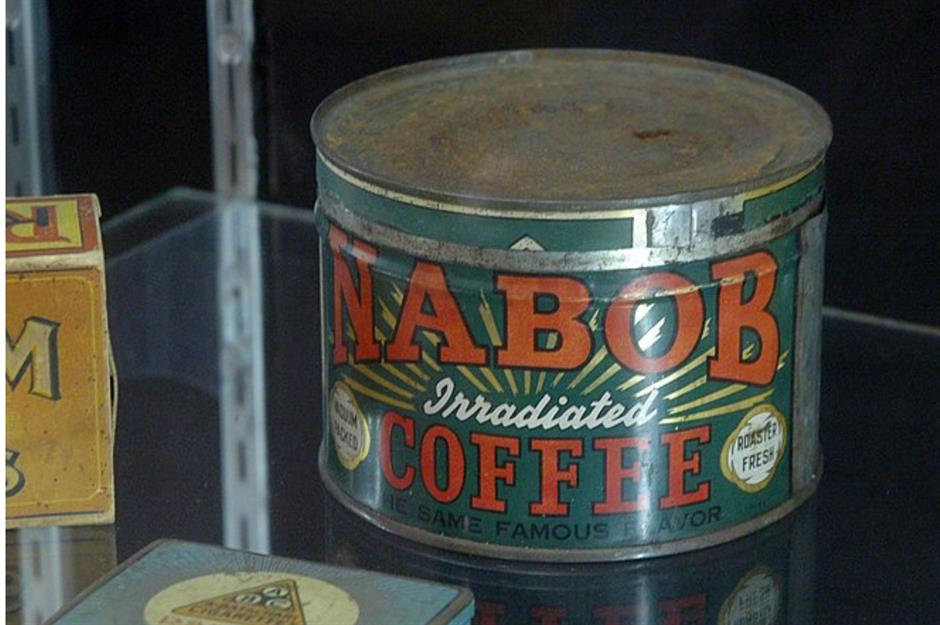
Nabob has lasted by moving with the times. By the 1980s, it was established across the country in ‘ready-brew’ instant form. The brand was taken over by Kraft in 1994, and a decade later, it partnered with Tassimo to produce pods for its new coffee maker. Nabob sources its beans from Colombia and has worked to make production environmentally friendly, receiving the Rainforest Alliance Certification seal and winning the Sustainable Standard Setter Award in 2012.
13. Quebec Pure Maple Syrup
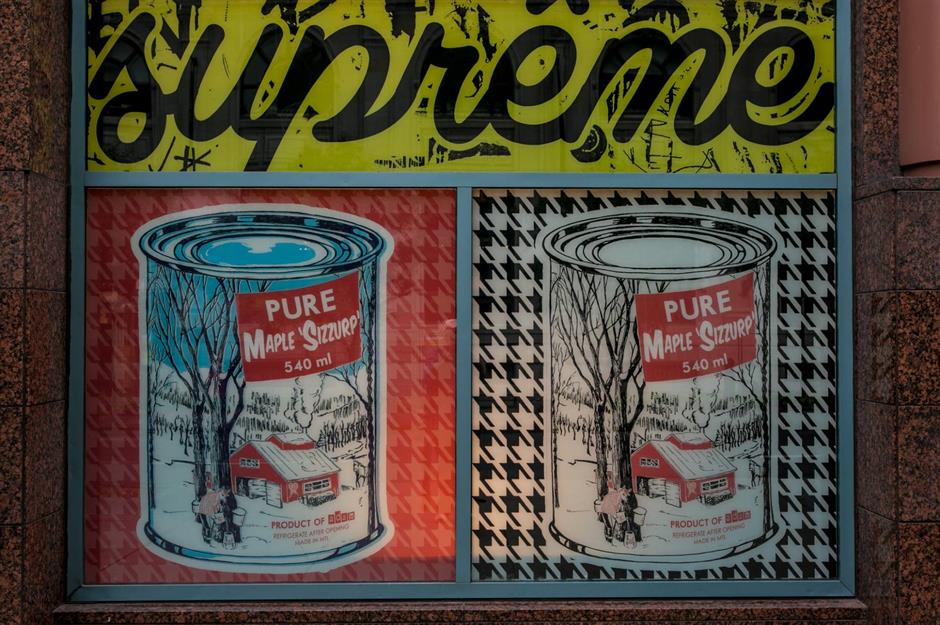
Canada is the world's biggest producer of maple syrup, and the maple leaf is recognised as a symbol of quality around the world. Authentic Quebec maple syrup is identifiable by the traditional can, depicting a snow-covered red cabin and bare-branched winter trees. The original design can be traced back to 1952, when it featured a horse-drawn sled transporting freshly collected maple sap. The syrup is usually seen drizzled over pancakes, waffles and more.
13. Quebec Pure Maple Syrup
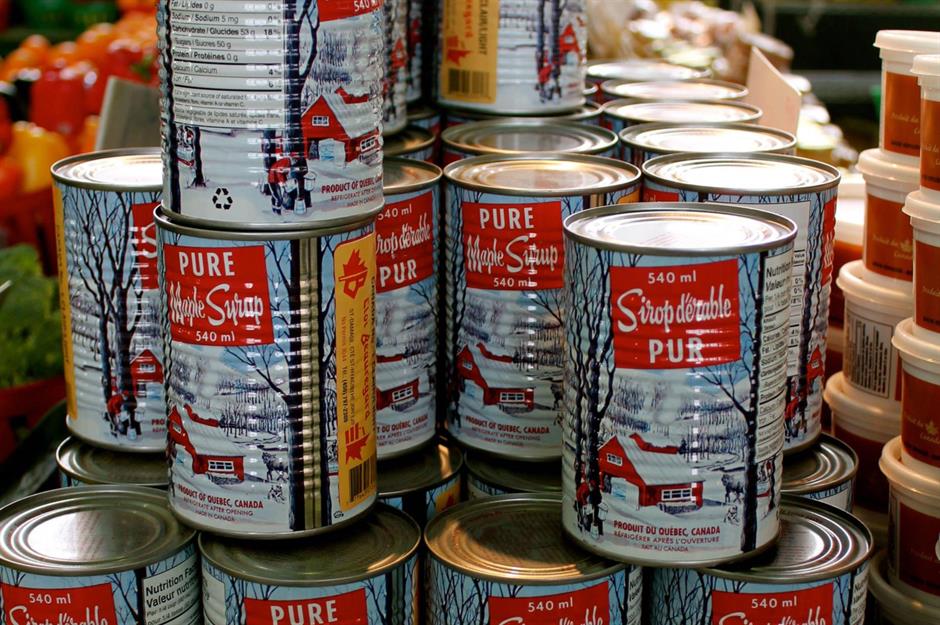
The original artwork was designed by the Dominion & Grimm Company, with text above the winter scene reading 'Pure Maple Syrup', or 'Sirop D’erable Pur' in French. Many variations on the design have appeared over the years, but the snow-topped log cabin and red-and-white labels have always been part of the packaging. The brand has now been adopted by the Decacer company, founded by the Levasseur brothers in Degelis, Quebec in 2000.
12. Chapman’s Ice Cream
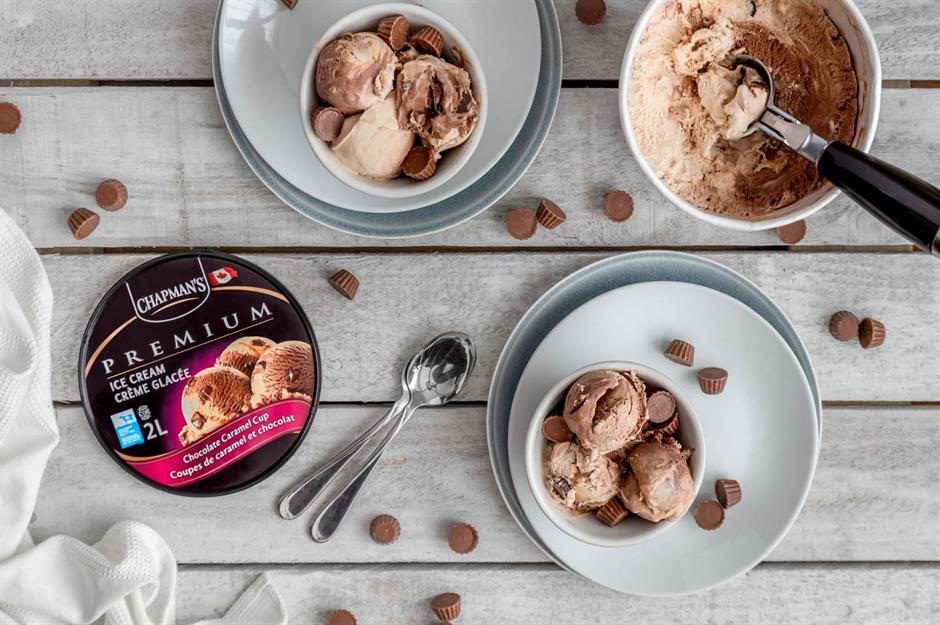
One of the country’s favourite sweet treats, Chapman’s Ice Cream has been gracing grocery store freezer aisles since 1973. The brand was set up by husband-and-wife duo David and Penny Chapman, who moved into an apartment above an old creamery in Markdale, Ontario and started selling ice cream to locals from two old trucks. Five decades later, the brand is the largest independent ice cream manufacturer in Canada.
12. Chapman’s Ice Cream
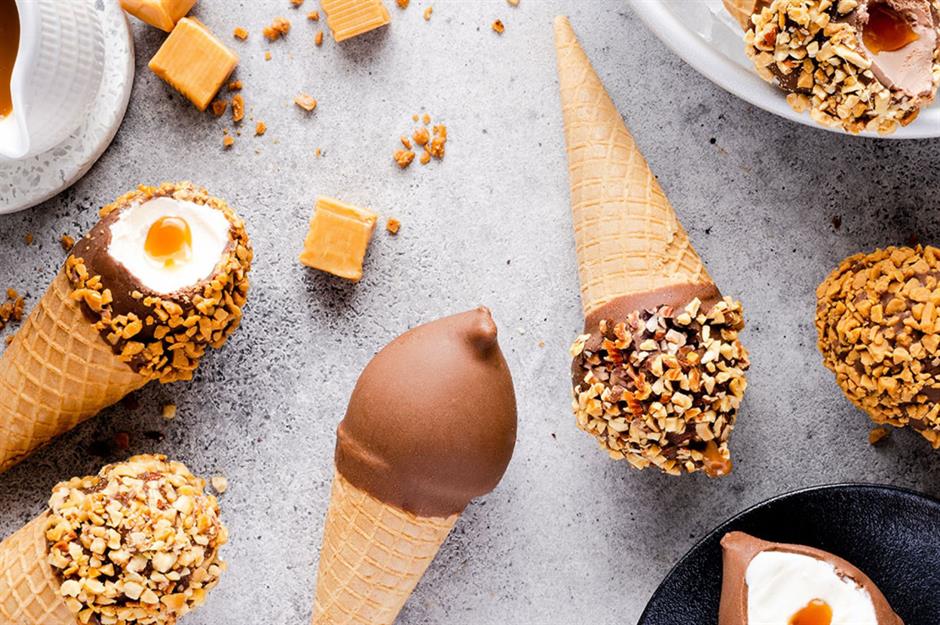
In 2009, Chapman’s Ice Cream nearly lost everything after a welder’s spark started a fire during the expansion of the company’s freezing tunnel system. Instead of giving in, the family-run business rebuilt from scratch – and it's gone on to launch over 280 frozen treats in a range of delicious flavour combinations. Vanilla Honey is a firm Canadian favourite, though you can’t go wrong with any of the flavours.
11. Crispy Crunch
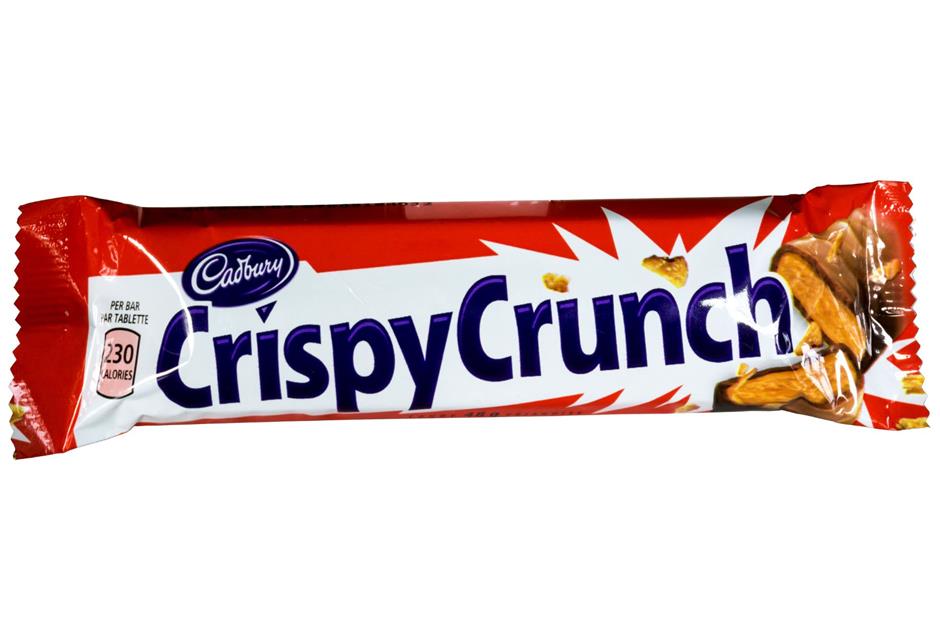
A popular choice since 1930, the Crispy Crunch is a hard chocolate bar complete with a crunchy peanut butter centre. Originally produced by Neilson’s, the bar was the brainchild of young candy roller Harold Oswin, who won a contest with his tantalisingly tasty creation. Neilson’s eventually sold its chocolate brands, including Crispy Crunch, to Cadbury in 1996.
11. Crispy Crunch
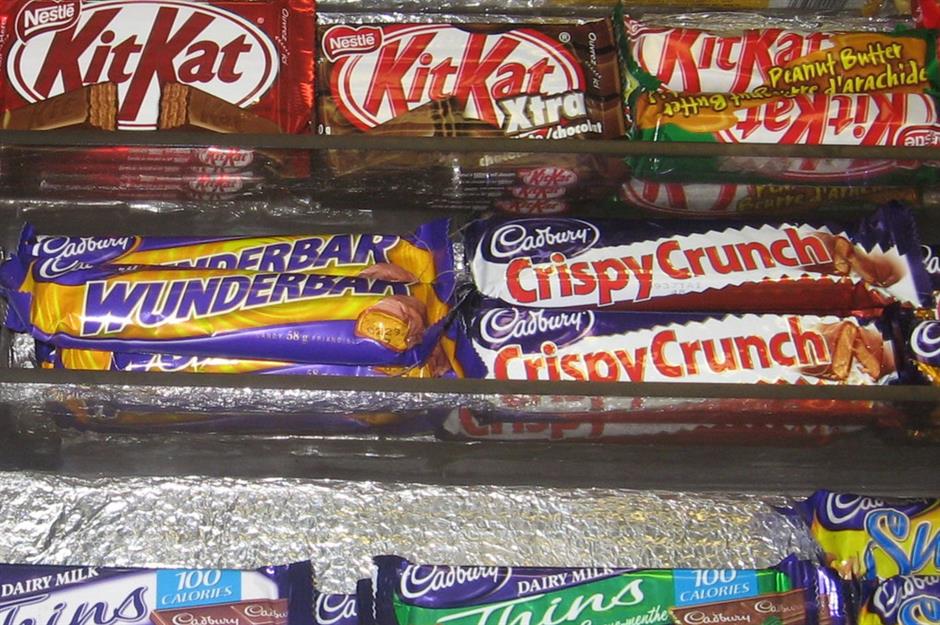
The recipe has changed slightly since Cadbury took over – the bar now has a sweeter finish, rather than a slightly salty one – and the red packaging was updated to align with Cadbury’s purple style in 2025. The Crispy Crunch bar attempted to cross the border into the US in the early 1990s, but it met with very little success. Regardless, it’s still one of Canada’s top chocolate picks.
10. St-Hubert
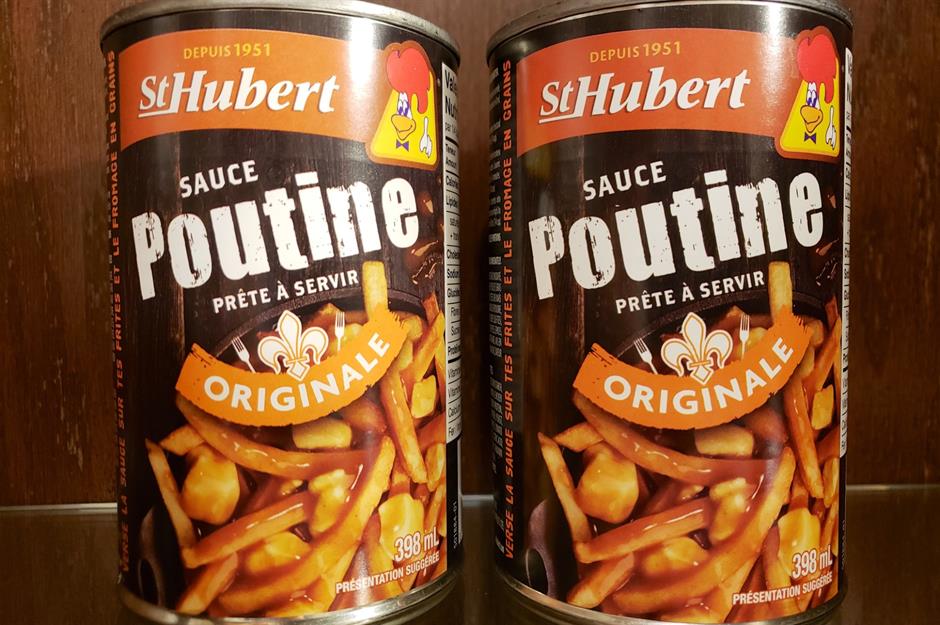
When it comes to comfort food, there's nothing like a warm, rich plate of poutine to soothe the soul. The traditional Québécois dish of fries laced with cheese curds and smothered in gravy became a popular snack in the 1950s. While everyone has their favourite places to go for poutine, St-Hubert Original Poutine Gravy, launched in 1965, made it easier to make it at home.
10. St-Hubert
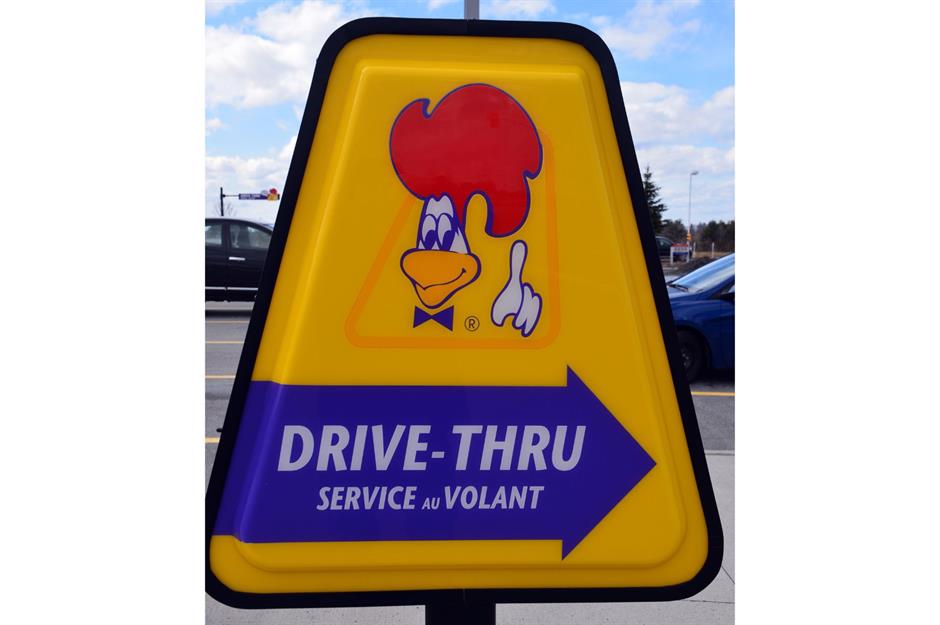
St-Hubert was founded as a family rotisserie chicken restaurant in Montreal in 1951. In the years that followed, it went on to become a nationwide chain – and a location even opened in Florida. The gravy came later, sold in supermarkets across Quebec, and bearing the smiley face of the St-Hubert chicken on the can. The brand also has a range of ready meals.
9. Hostess Hickory Sticks

These smoky, salty stick-shaped potato snacks were introduced in the 1970s by potato chip company Hostess – and they became an instant hit. As the jingle trilled: 'Cause when you've got the munchies, nothing else will do'. The slogan accompanied a 1980s TV ad, which featured cute munchies monsters.
9. Hostess Hickory Sticks
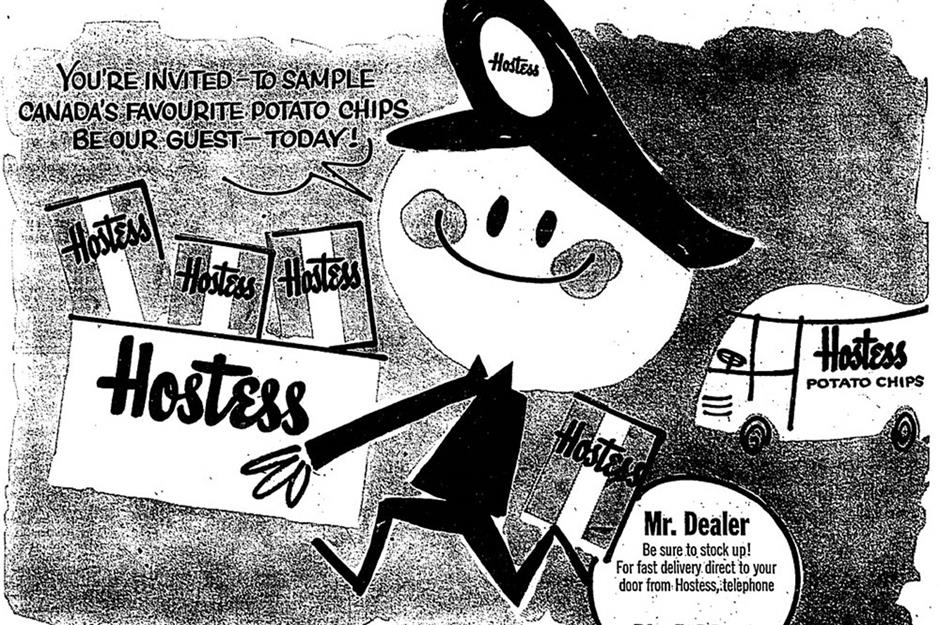
Hostess was founded in 1935 in Ontario by Edward Snyder, who started out using his mother’s stove to bake chips at home. The company went on to become Canada's main producer of potato chips, with a variety of brands and flavours, until it partnered with FritoLay in 1987. The brand now only sells Hickory Sticks, but it continues to innovate; a new salt and vinegar flavour was introduced in 2021.
8. Hawkins Cheezies
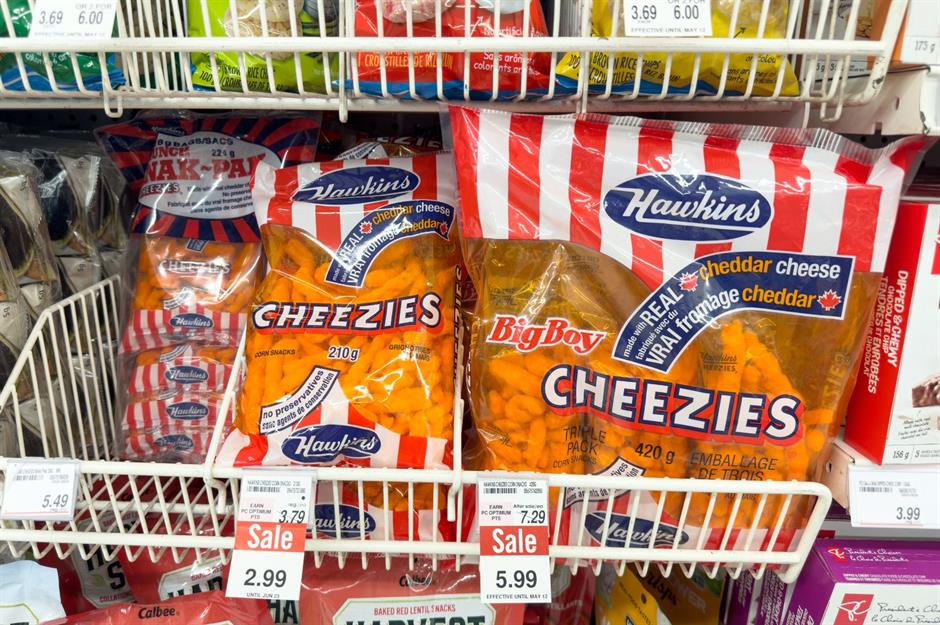
Irresistibly crispy and downright delicious, Cheezies are a crunchy cornmeal snack made with real Cheddar cheese. They were invented by two men, W.T. Hawkins and Jim Marker, in 1949. The pair didn’t advertise their product, relying solely on local interest – but before long, Cheezies became incredibly popular, gaining a loyal following who loved their strong cheesy flavour.
8. Hawkins Cheezies
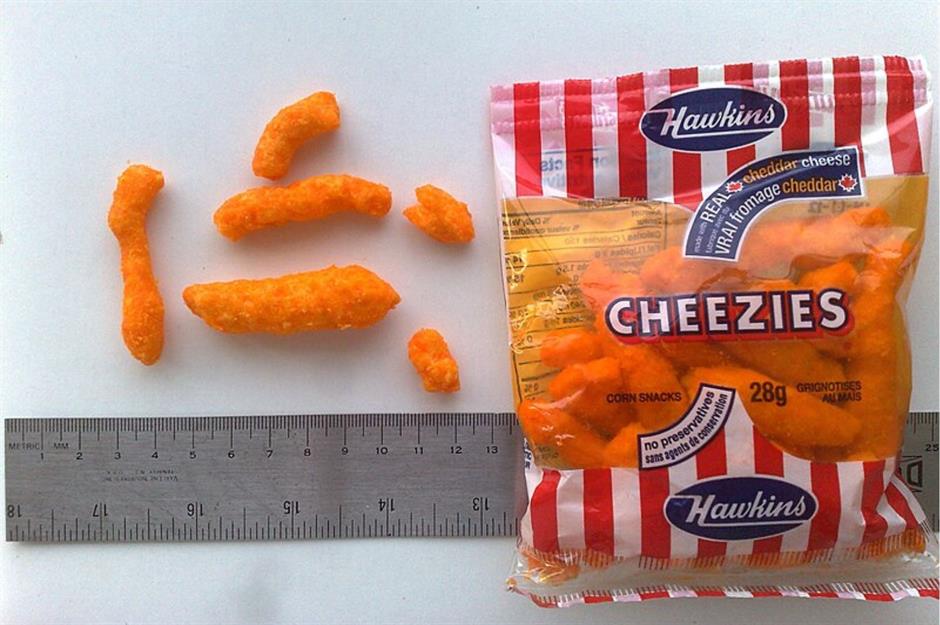
Despite appearing alongside chips with huge marketing campaigns and modern packaging designs, Cheezies still stand out thanks to their red-and-white striped packs and distinct orange-hued colour. The brand's disinterest in advertising continues today; Cheezies aren't on social media, but they're still among the country’s most-loved snacks.
7. Premium Plus
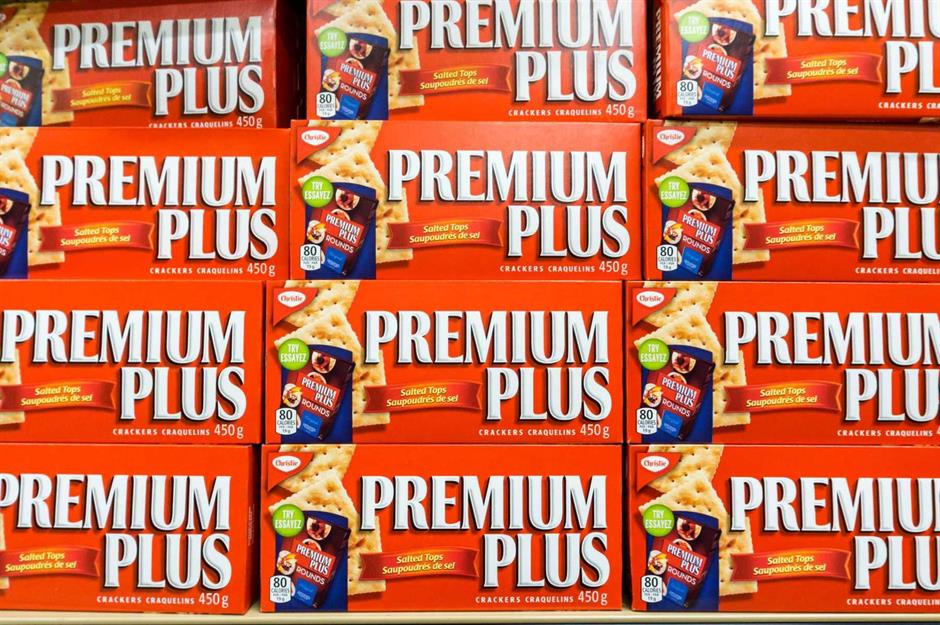
Canadians will probably remember Premium Plus crackers as the plain, salty biscuits they were given to eat as children when they weren't feeling well. Similar to Ritz or Graham crackers, they've been a store cupboard staple in family homes since 1876, when they were launched by Christies. William Christie, known as Mr. Christie, started as a baker in Toronto before moving his focus to biscuit manufacturing.
7. Premium Plus
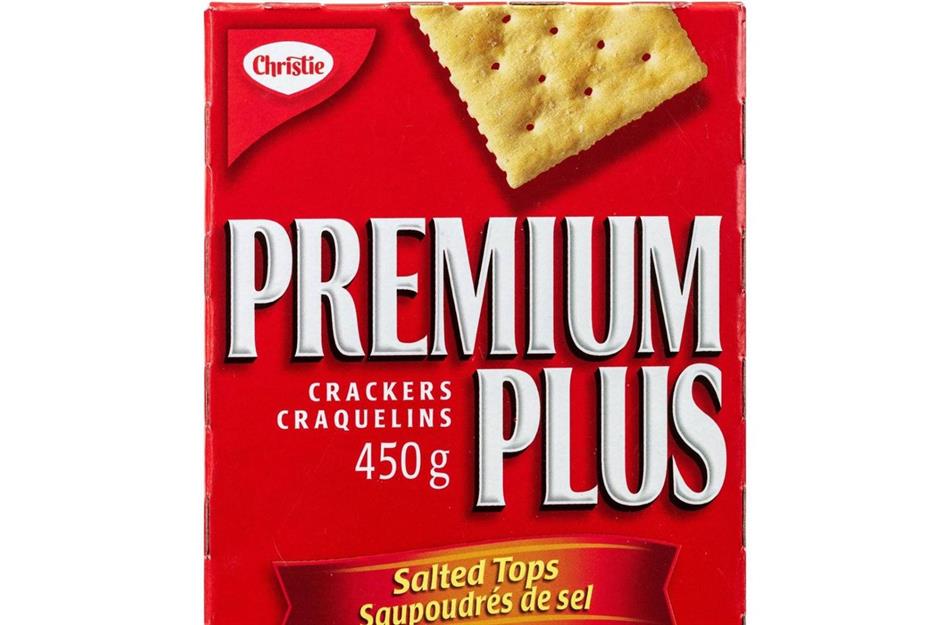
Christies was bought by US biscuit company Nabisco in 1928, so the name will be familiar to American shoppers, too. However, while they're sold in a white box under the name Premium in the US, in Canada the box is red, and they're still called Premium Plus. Whether crumbled into meatloaf, dipped in soup or simply topped with cheese for a classic snack, there's no doubt that Premium Plus is the Canadian cracker of choice.
6. President’s Choice The Decadent
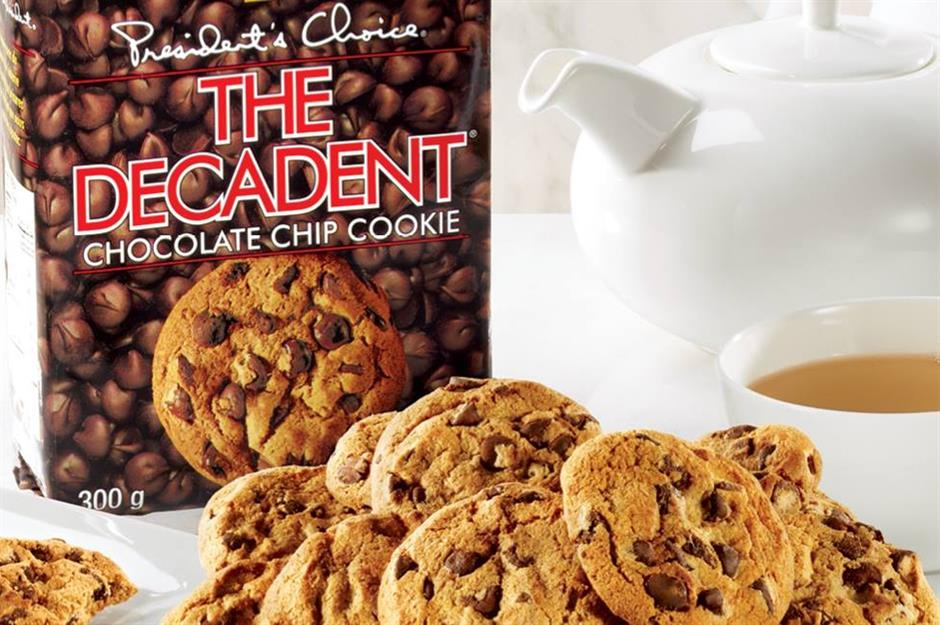
President's Choice, a line of deluxe products from Loblaw supermarkets, launched in 1984 – but it's The Decadent range, released four years later, that Canadian kids of the 1980s are more likely to remember. The chocolate chip cookies, in particular, were generous in size and in chocolate content, making them just the thing to pester parents to buy.
6. President’s Choice The Decadent
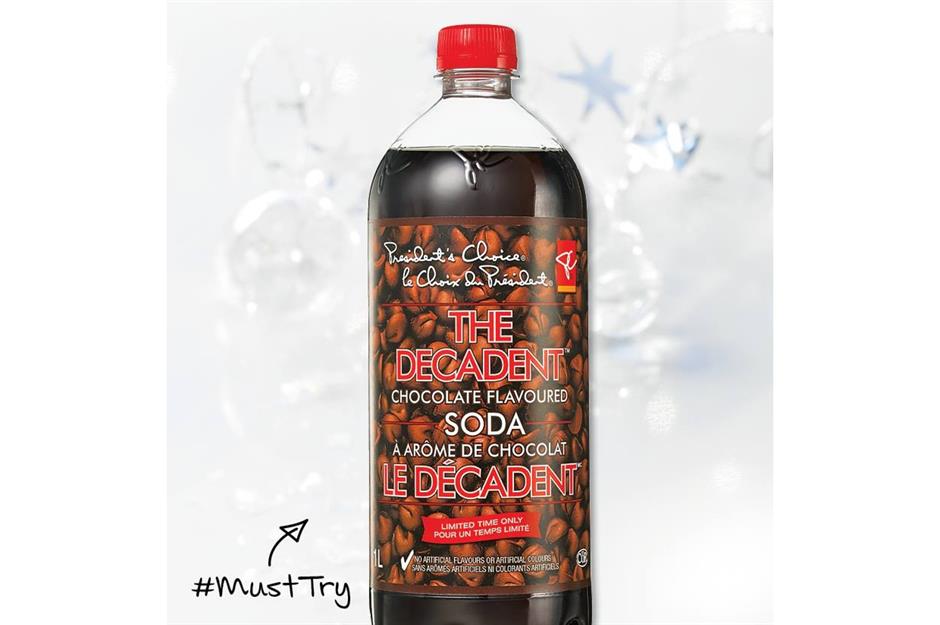
The Decadent range has since expanded beyond cookies and now includes chocolate cakes, chocolate cream pies and a hot chocolate mix. For a brief time in 2013, The Decadent fans were even offered the chance to buy chocolate soda. Some loved the 'carbonated chocolate syrup' drink, while others found it too sweet – and it was eventually discontinued. The Decadent Chocolate Chip Cookies are still considered the best by many, though.
5. Jos Louis
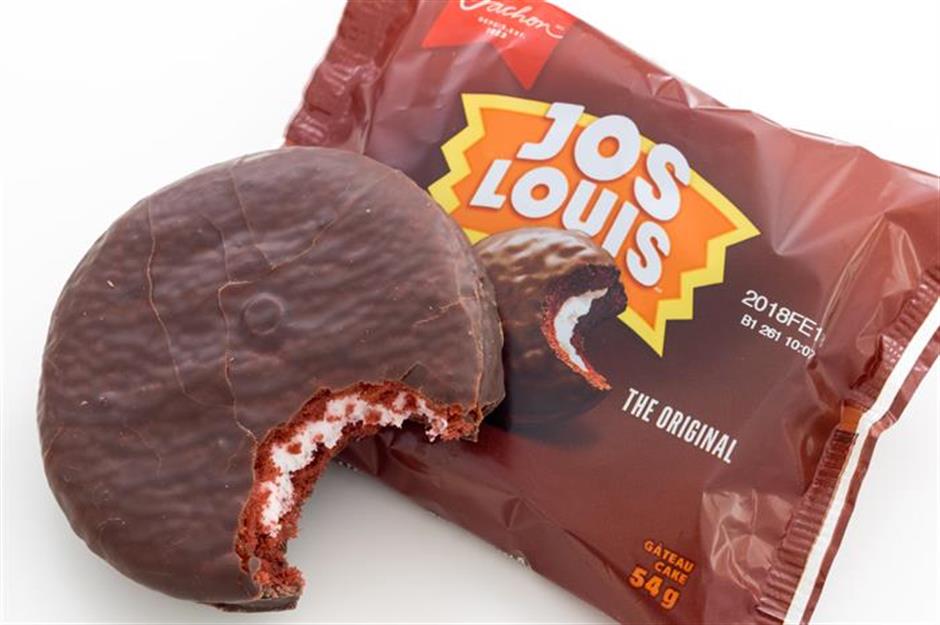
This tasty chocolate treat dates back to 1932, when French Canadian baker Josef-Arcade Vachon developed a new recipe at the family bakery he ran with his wife in Sainte-Marie-de-Beauce, Quebec. He named the cake after his sons, Joseph and Louis. The original Jos Louis features red velvet cake sandwiched around vanilla cream and dipped in chocolate.
5. Jos Louis

Vachon Inc. was bought by Canada Bread in 2015, and it now sells a range of pastries and cakes – including the Ah Louis, a chocolate sponge topped with vanilla cream and caramel, and wrapped up in a chocolate shell – and the May West (a vanilla sponge version). If that all sounds too much, you might like the 1/2 Moon: a halved Jos Louis, minus the chocolate.
4. Coffee Crisp
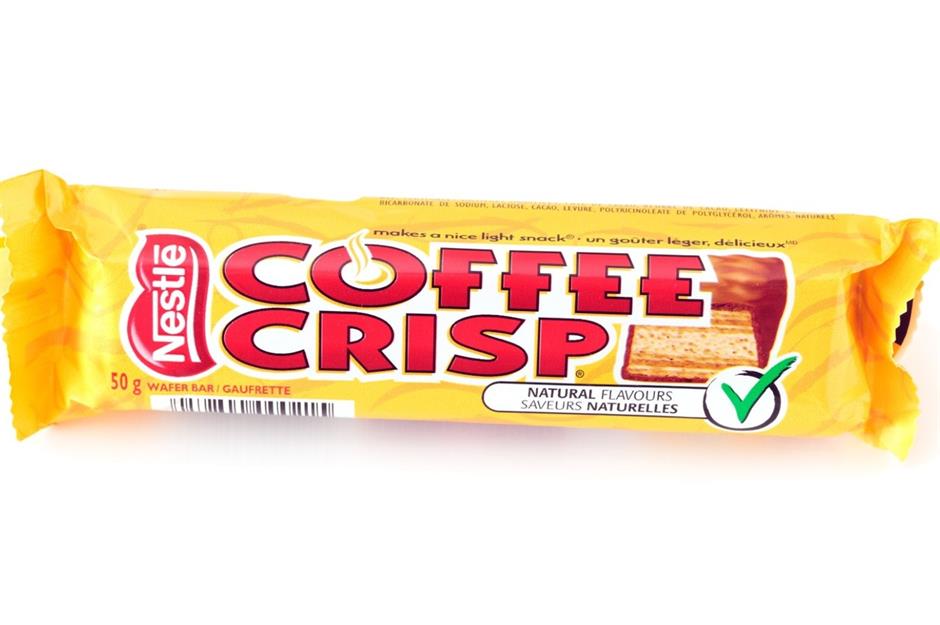
The Coffee Crisp is a hot contender for Canada’s favourite chocolate bar, with more than 153 million produced annually. Its origins lie in the UK; British sweet manufacturer Rowntree's launched its Wafer Crisp in Canada as the Biscrisp, but it was the coffee-flavoured version, launched in 1938, that was truly embraced by the nation. Nestlé took over the company in 1988, moving production to the Toronto factory where the bar is still made today.
4. Coffee Crisp
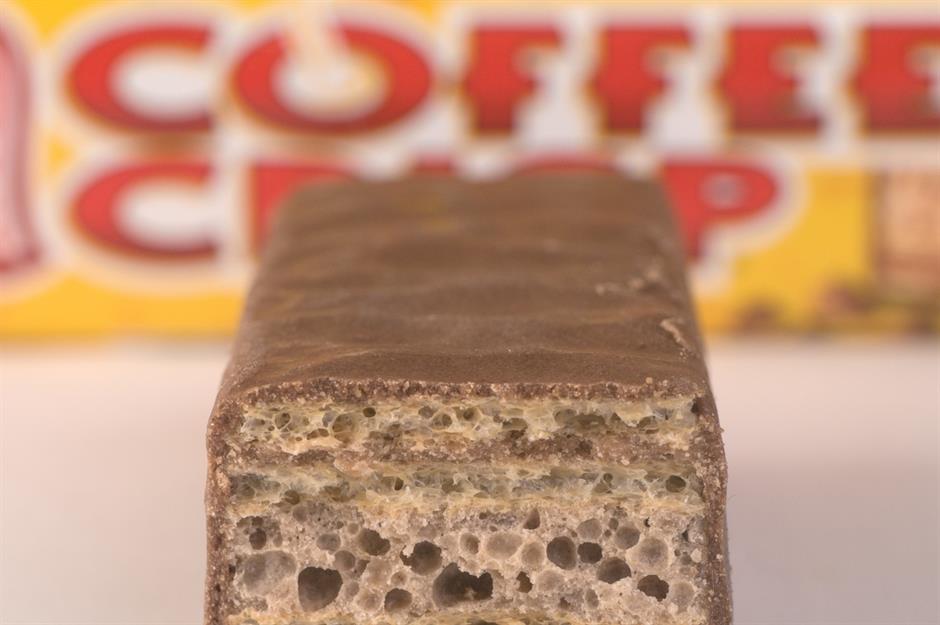
Declared a 'Canadian gem' by Nestlé, the chocolate-covered layered wafer is the taste of home many Canadian expats crave. It's sold in some specialist shops in Australia, and it can be hunted down in the USA, too – particularly in stores close to the Canadian border. Can't get enough coffee-laced chocolatey goodness? Coffee Crisp ice cream and ice cream bars are available, too.
3. Old Dutch potato chips
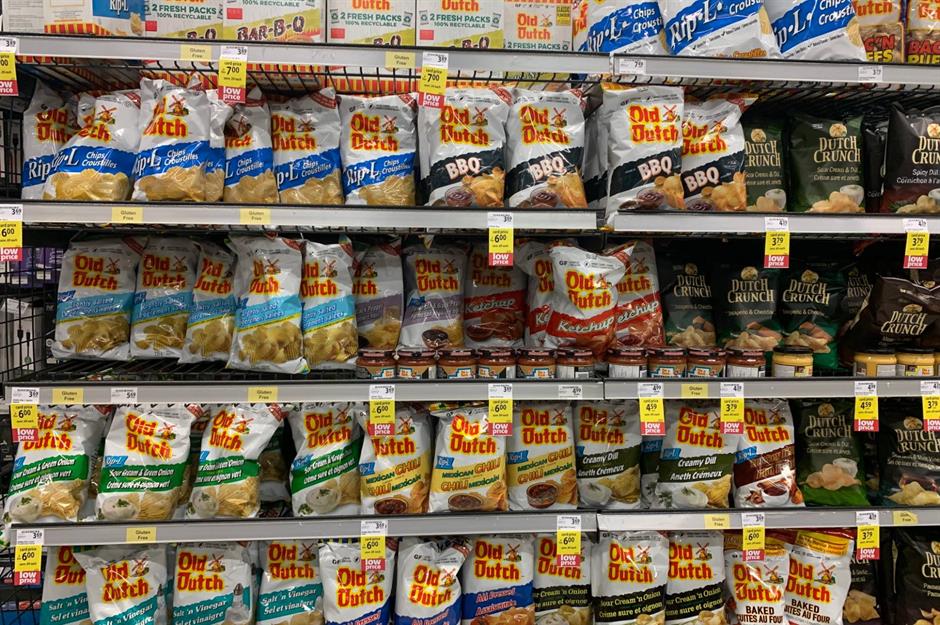
Don't be confused by the name – these potato chips are Canadian, through and through. Old Dutch Foods began making potato chips in 1954, using locally sourced spuds – it takes its name from the windmill in Winnipeg, Manitoba that inspired its logo. One of the oldest potato chip brands in Canada, Old Dutch Foods is still fully operational and has branched out into other snack and dip products.
3. Old Dutch potato chips
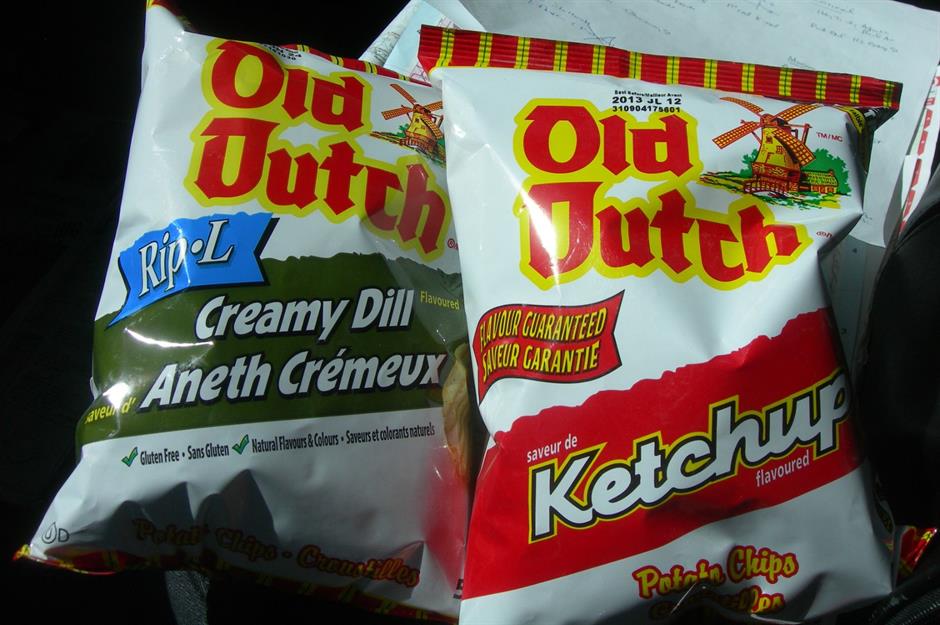
Old Dutch also produces Canada's favourite flavour of potato chips – ketchup. Ketchup chips were invented by Hostess in the 1970s, and that special taste combination of tomatoes and sugar soon became a hit throughout the country. Old Dutch, FritoLay and British company Walkers have since brought out their own ketchup chips, but the snack remains a Canadian creation.
2. Caramilk
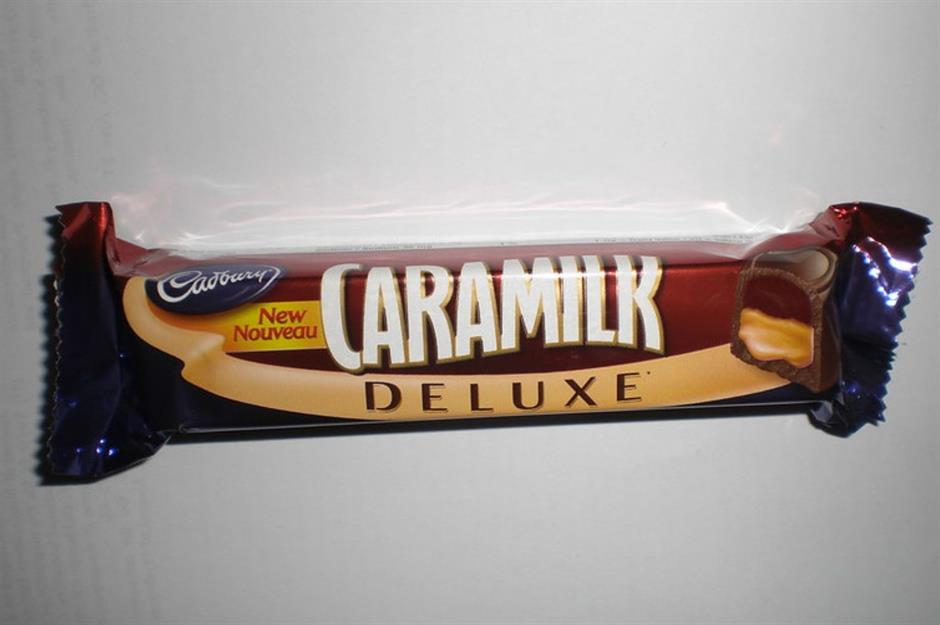
Never suggest that a Caramilk chocolate bar is just a Cadbury Dairy Milk Caramel in a different wrapper. It's also not to be confused with the caramel flavoured white chocolate Caramilk from Australia. The Canadian Caramilk bar consists of milk chocolate with a caramel filling – and it is, and always has been, exclusive to Canada. Caramilk bars were created in 1968 under the British Cadbury brand, and they were made exclusively in the Gladstone Chocolate Factory in Toronto, Ontario.
2. Caramilk
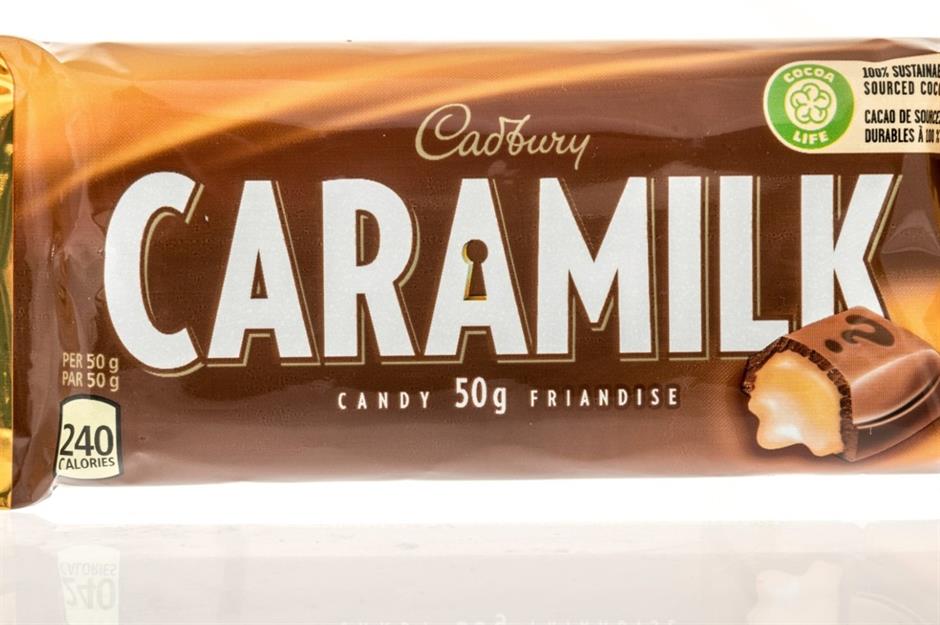
‘Big, creamy, dreamy’ as the tagline goes, the Caramilk is worshipped by chocolate lovers in Canada. The simple wrapper has evolved over the years, and these days, it features a keyhole in the centre of the letter 'A'. This symbol alludes to the fact that the answer to one of the sweet mysteries of life – how do they get the caramel into the chocolate? – is kept under lock and key.
1. Tim Hortons Timbits
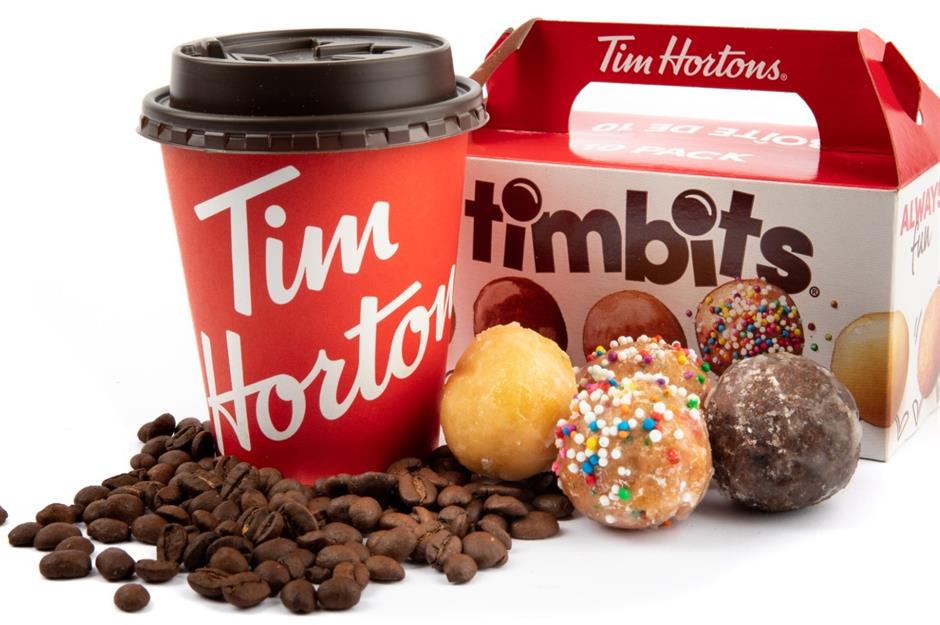
Along with maple syrup and Canada Dry ginger ale, Tim Hortons is arguably one of Canada's most popular food exports. The coffee shop was founded by professional hockey player Tim Horton in 1964 in Hamilton, Ontario. The brand is famed for its Timbits, invented in 1976 – because why not eat the doughnut hole, too? Tim Hortons now has branches around the world, including in China, the Middle East and the UK.
1. Tim Hortons Timbits
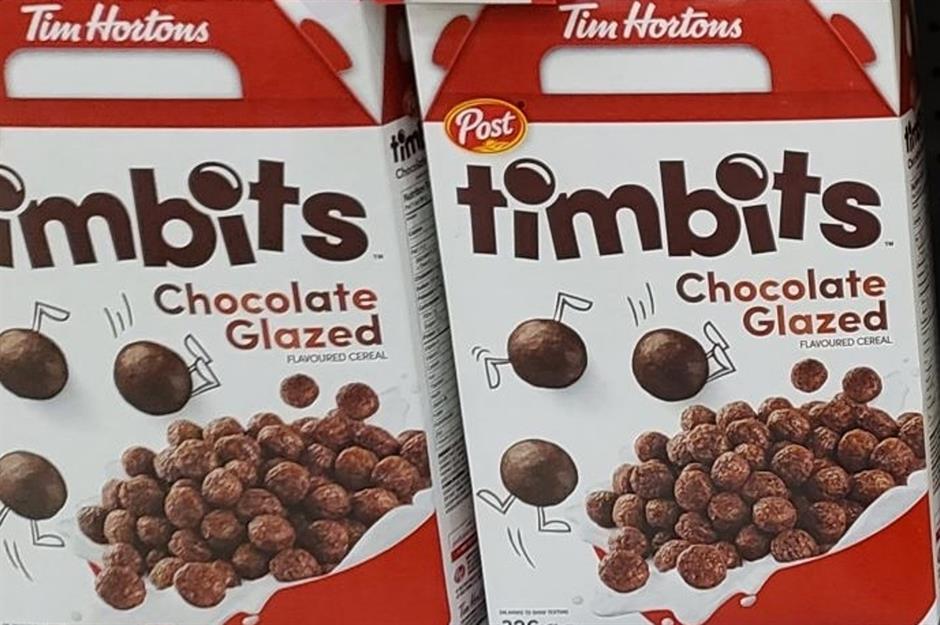
You might be able to get Tim Hortons Timbits in many other countries now, but one tasty treat that's still exclusive to Canada is Timbits cereal. Launched in 2020, the miniature chocolate doughnut holes make for a deliciously indulgent breakfast (though they may not be the healthiest way to start the day). And, for special occasions, there's even a Birthday Cake flavour.
Now discover the Canadian foods the world adores
Last updated by Lottie Woodrow.
Comments
Be the first to comment
Do you want to comment on this article? You need to be signed in for this feature